Autonomous Systems • Intralogistics • Robotics
Everything from one Source – Innovative System and Process Solutions for the Industrial Environment
Modern applications and methods form the basis for progress and innovation in the industrial market. Especially in our fields of activity of autonomous systems, intralogistics and robotics, progressive solutions create real competitive advantages for users. Our goal is to optimize systems according to individual requirements, taking into account the system environment, and thus to make processes more effective and efficient.
We analyze existing systems as well as the related processes as an engineering office. Based on a co-design (mechatronics, hardware and software), we then plan, develop and realize autonomous and robotic systems as well as applications supported by AI and machine learning in an iterative process. In addition, we develop independent software solutions that are integrated into existing systems and extend them with new functionalities.
Analyse
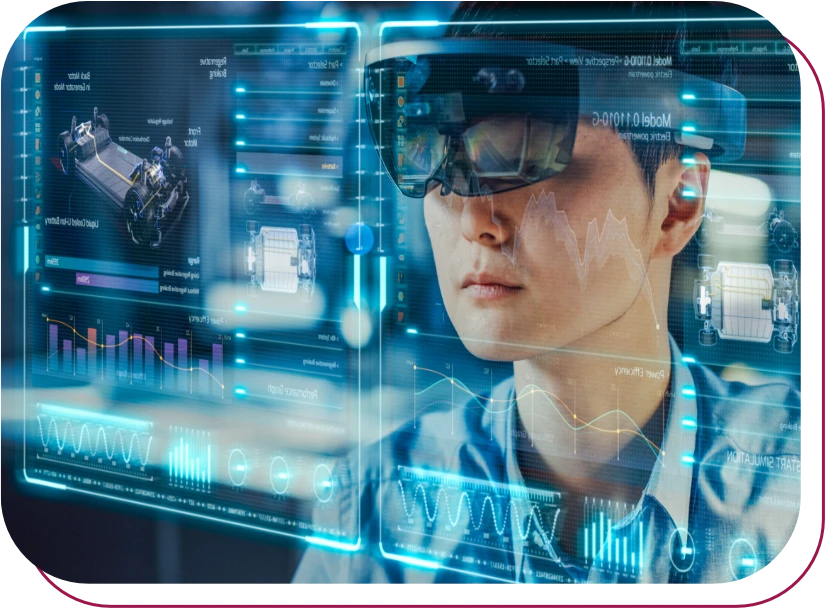

Analyse
We conduct requirements and process analyses before implementing autonomous, robotic or intralogistics systems. We define the characteristics of the solution to be implemented with a view to the application environment and consider the overall system consisting of mechatronics, hardware and software from an engineering perspective. In these steps, we first answer the questions of what type of system is involved, what is to be accomplished, or what requirements must be met. In order to determine the goal of the system to be developed, we examine not only business aspects but also technical aspects of currently available solutions. In these technical investigations, we carry out process-related measurement campaigns in order to identify, for example, system behavior that is interesting or needs to be taken into account, based on signal analyses. The data obtained form the basis for the following modeling.
Model
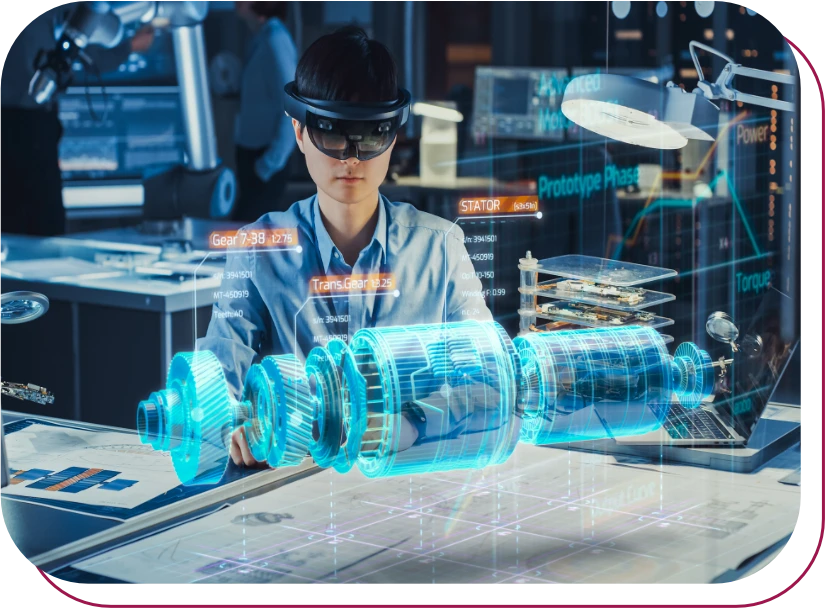
Model
Modeling is performed on the basis of the analyses already performed and data obtained. In this step, we create a model of the future target system to represent the behavior of interest using mathematical or cybernetic methods. In our modeling, we consider three levels: the system environment, the system, and the interaction between the two (behavioral modeling).
Including the system environment is particularly important for autonomous systems in order to represent the subsequent operational environment. This means that, in addition to the system, the interaction with the environment is also modeled. This applies, for example, to a production hall with the machines and intralogistic transport routes it contains.

Virtual Prototype
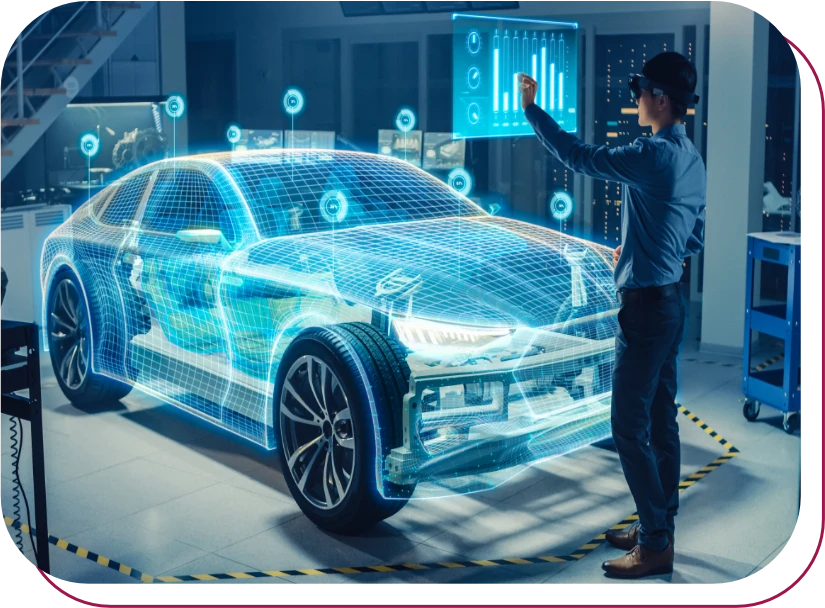

Virtual Prototype
We use modern technologies, tools and frameworks to create a virtual prototype of the envisaged solution. The basis is the previously obtained knowledge from the analysis and the previously performed modeling. Depending on the future application, the virtual prototype can concern both the system itself in different scenarios as well as only certain sub-processes.
A digital twin of the planned system and the environment is created within this framework. At the same time, this also involves 3D models, which are generated using the Unreal Engine, for example, in order to achieve a practical representation. The information gained here forms the basis of the subsequent simulation.
Simulate
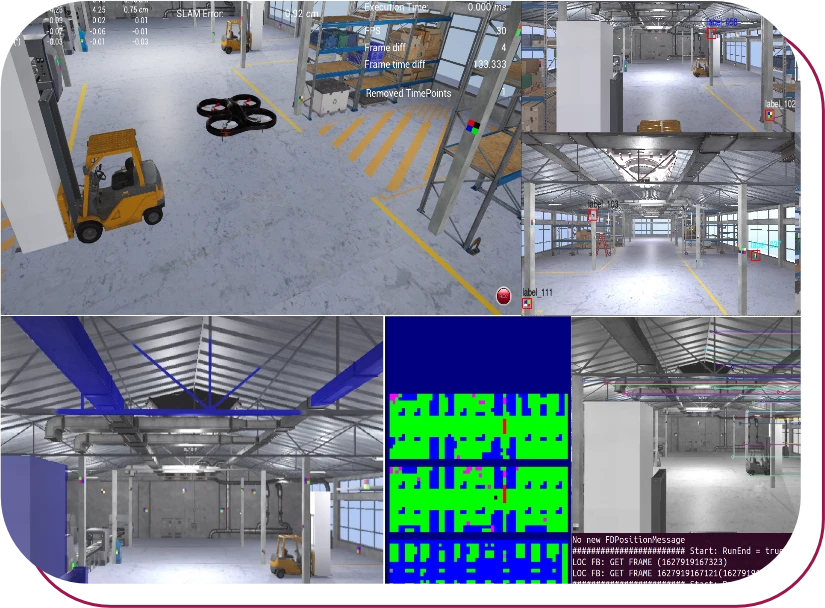
Simulate
We create a simulation based on the virtual prototype, in which the behavior of the system is checked in order to gain interesting information on a larger scale. All previous findings (3D models, behavior descriptions etc.) are brought to virtual life. The simulation shows how the target system interacts with the environment and how it performs its task. In the process, we implement various simulation runs and highlight the different scenarios that were defined in the analysis and target definition. In the simulation of the scenarios, we check the system behavior and identify possible deviations. If there are differences to the planned system behavior compared to the previous results, adjustments can be made directly as part of the iterative process, for example in the modeling or on the virtual prototype.
The advantage of our simulations: In contrast to tests on the real system, extensive databases are created within a very short time. These are necessary, among other things, for the implementation of AI and machine learning and finally ensure a more precise solution according to the requirements.

Implement
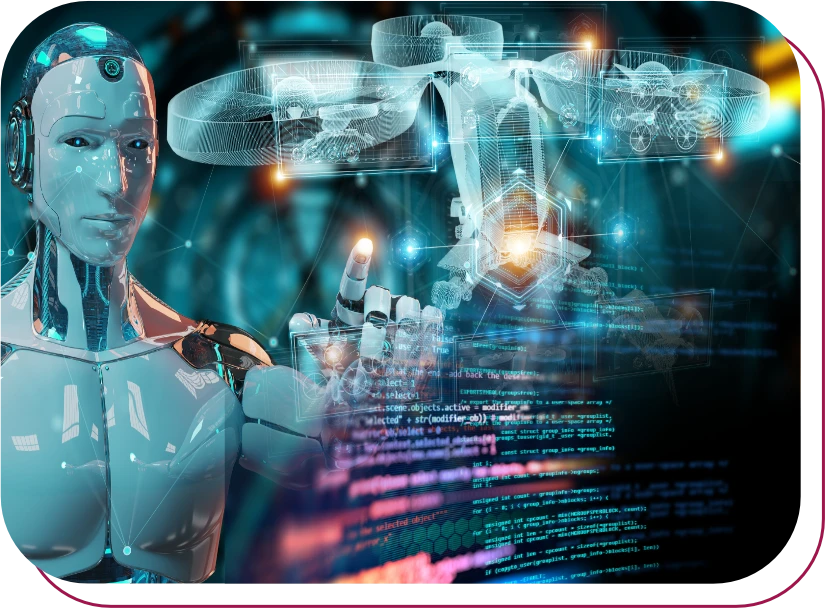

Implement
After the comprehensive analysis and the adjustments in the previously performed steps of the iterative development process, the basis for the implementation of the system is laid. Once the desired level of maturity has been reached, we transfer the system from the simulation to the real environment with the intended hardware (mechatronic, embedded and sensory components). In addition, we implement prototypes – if necessary – in several variants. By means of measurement campaigns, we investigate the system behavior of these in sample environments with the planned activities and interactions in order to derive the final system design.
Automate
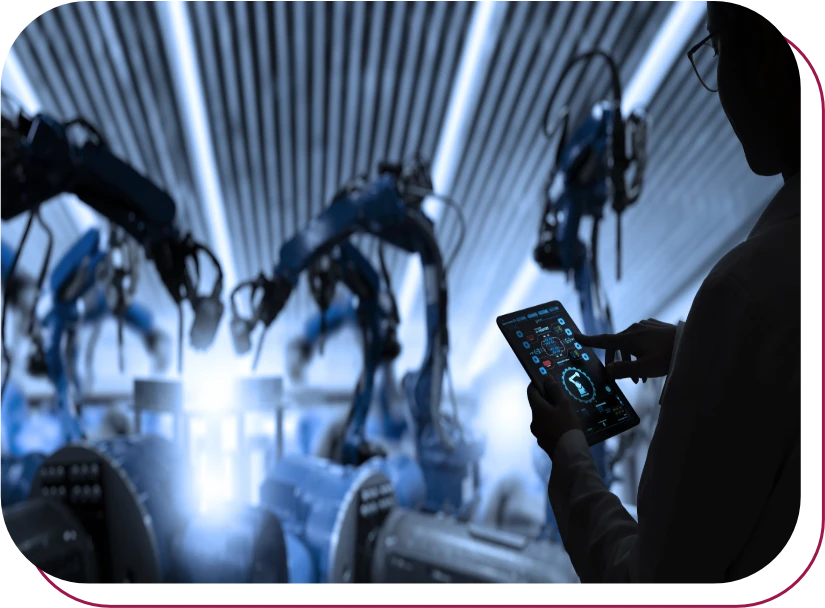
Automate
We differentiate the automation phase depending on the type of project.
In a proof of concept, we deploy a prototype in a real environment and investigate whether the desired results are generated. In this way, a detailed test of a specific prototype variant is carried out as part of the iterative process. If successful, this is the basis for a more advanced automation project.
In addition, we alternatively provide a fully functional system. In this case, the automation project goes through the entire process from the initial analysis to the creation with a research component to the final result.
We provide support at the service level in every project. In addition to installation and configuration, this also means commissioning and ongoing support for the system and process solution provided. At all times, we ensure a strong customer focus and close cooperation without burdening the client in terms of personnel and costs.

About
As an innovative company, we plan, develop and implement modern solutions in the fields of autonomous systems, intralogistics and robotics. As a spin-off from Webware-Experts OHG, we can look back on over 26 years of technological and methodological know-how, which is essential in the industrial market to provide advanced services to our business partners. Focusing on the combination of modern technologies such as drones, edge and cloud computing as well as AI and machine learning, we are always on the cutting edge. Central to our research and development activities as well as practical implementation is furthermore the expertise of our employees. This expertise, coupled with a strong customer orientation, allows us to work closely together to make systems and processes more efficient, economical and future-proof. With all our services, we pursue the goal of customer satisfaction. We achieve this not only through the quality of our solutions, but also through partnership. Thus, we rely on a communicative, transparent and trusting cooperation for a sustainable and successful business relationship.
Research Project and Funding

The engineering office Dr. Andreas Baumann is funded within the framework of a research project by the European Union and the European Regional Development Fund through the funding program ProFIT Brandenburg. This funding relates to the research project entitled „Research project for the creation of mobile, autonomous systems for various logistics, production and maintenance processes in a smart factory using the example of AI-controlled drones“ (German Title: „Forschungsvorhaben zur Schaffung mobiler, autonomer Systeme für verschiedene Logistik-, Produktions- und Maintenance-Prozesse in einer Smart Factory am Beispiel KI-gesteuerter Drohnen“).In this research project, new findings in the fields of deep learning and artificial intelligence are to be developed to enable autonomous, AI-controlled systems that are capable of supporting various logistics, production and maintenance processes to a significantly higher degree than current robotic support systems. The deployment of the solution is expected to enable significant business benefits to the user. To demonstrate that the new findings lead to building specialized AI-controlled systems for indoor use in a short time, an autonomous drone (quadrocopter) for inspections of industrial halls is developed as an example. For this purpose, it will be equipped with a 3D gimbal camera that can be controlled with a VR connection.
Contact
Are you interested in our work and our services? Contact us! We would like to talk to you. You can reach Dr. Andreas Baumann as contact person under:
Breitscheidstraße 48, 16321 Bernau near Berlin, Germany • Phone: +49 3335 32157 | + 49 1512 3045398 • abaumann@dr-baumann-labs.de



